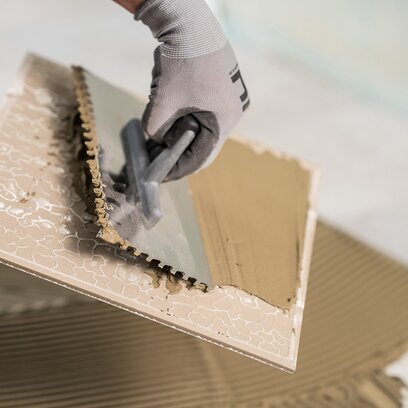The larger the tile formats (from an edge length of 60 cm) and the thinner the ceramic tiles, the more important it is to lay them in such a way that almost no air cavities remain underneath them.
Even under increased thermal or mechanical loads, for example in swimming pools or on outdoor surfaces, it is necessary to ensure that the tiles have almost 100% adhesion to minimise damage caused by use.
A strong bond is not just a matter of large and special tile formats or the demands of the site where the tiles are bonded. A well bonded tile with a quality adhesive will guarantee you beautiful tiles for the long term - without cracking, peeling or buckling joints.
For this purpose, the tile adhesive is applied evenly to the substrate and the back of the tile using the buttering & floating method with a suitable notched trowel.
A thin layer of adhesive is applied to both surfaces. In order to squeeze out air bubbles well, keep the same tooth direction on both surfaces. Tap the tiling element gently after laying, this will push the air out.
As standard, tooth trowels with a tooth height of 8-14 mm are used to apply the layer using this method.
Buttering & floating is a bit more time consuming, but the result is definitely worth it.



